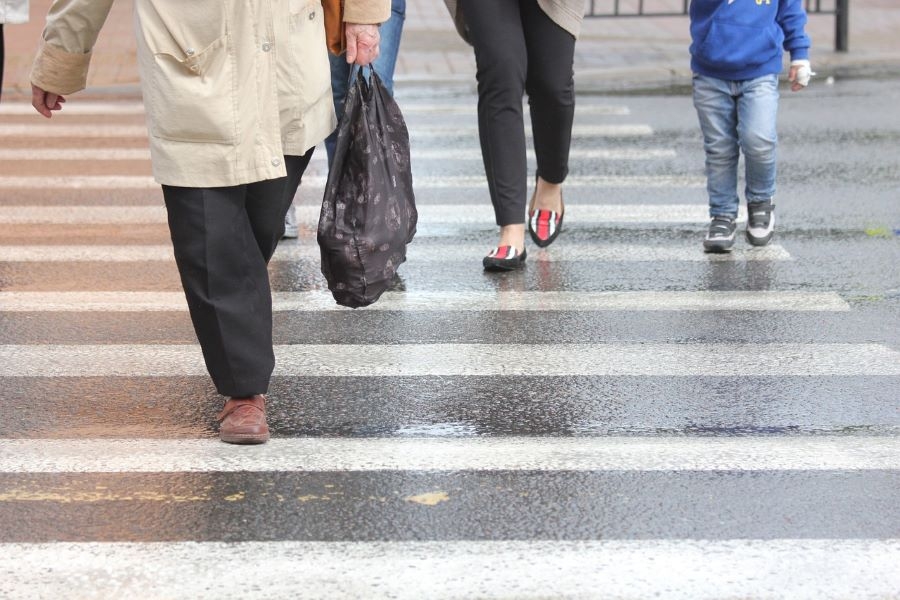Crosswalks are crucial for ensuring pedestrian safety as they provide designated areas where individuals can safely cross roads. However, despite their presence, pedestrian accidents still occur. This emphasizes the need to be vigilant and prioritize crosswalk safety. In this post, we will explore the obligations that both pedestrians and drivers have when it comes to crosswalks. Additionally, we will discuss measures that can be implemented to enhance safety for everyone involved.
Understanding Pedestrian Responsibilities
Pedestrians also bear responsibilities when it comes to ensuring crosswalk safety. By abiding by traffic rules and adopting safe practices at crosswalks, pedestrians play a role in minimizing the risk of accidents. If you are in the area and get caught up in a similar situation, consulting a pedestrian accident attorney in San Francisco is a good idea. They will assist you every step of the way.
Here are some things you should abide by as a pedestrian:
Adhering to Traffic Signals
Pedestrians should patiently wait for the "Walk" signal before entering a crosswalk. Disregarding traffic signals not only puts their lives at risk but also creates confusion among other road users.
Vigilance in Both Directions
Even when the "Walk" signal is illuminated, pedestrians should look left and right to confirm that all approaching vehicles have come to a complete stop before stepping onto the crosswalk. This proactive approach helps avoid collisions with drivers who may fail to observe traffic signals or stop signs.
Ensuring Visibility
Maintaining visibility is paramount for pedestrians when crossing a road.
Wearing light-colored clothing at night or in low-light conditions significantly increases their chances of being visible to drivers.
Responsibilities of Drivers at Crosswalks
While pedestrians have their obligations to ensure crosswalk safety, drivers also have responsibilities to prioritize the well-being of those on foot. Understanding these responsibilities can help reduce accidents and protect road users.
Giving Right of Way
When drivers approach an unmarked crosswalk, they should yield the right of way by slowing down or stopping when they see pedestrians waiting or about to enter the road from any direction. This applies even if there are no stop signs for the drivers.
Exercising Care
Drivers are required to exercise caution when approaching a crosswalk, following speed limits, and remaining attentive to pedestrians. Being vigilant is crucial during peak hours or in areas frequently used by pedestrians.
No Passing
It is not only dangerous but illegal in most jurisdictions for drivers to pass other vehicles that have stopped or are expected to stop for pedestrians within a crosswalk. It's also essential to be aware of the regulations in your area.
Legal Compensation Options
Despite the efforts to promote safety at crosswalks, accidents can still happen as a result of negligence, whether it be from drivers or pedestrians themselves. When such accidents occur, it may become necessary to take action in order to seek compensation for any injuries sustained.
Establishing Negligence
In order to pursue action against a driver or party, it is crucial to provide evidence showing their failure to fulfill their duty, such as not yielding right of way or disregarding traffic signals.
Seeking Compensation
Pedestrians who have been injured may have the right to receive compensation for expenses, lost wages, pain and suffering, and other damages resulting from the accident. Consulting with a personal injury lawyer can assist victims in understanding their rights and efficiently navigating through the process.
Creating Safer Crosswalks: Improving Infrastructure and Engaging the Community
In addition to responsibilities, ensuring safer crosswalks requires efforts among local governments, city planners, and the community as a whole. By implementing upgrades in infrastructure and raising awareness within the community, we can establish safer environments for pedestrians at crosswalks.
Enhanced Crosswalk Design
Local authorities can invest in improving crosswalk designs that are more visible and user-friendly. To promote pedestrian safety, it is important to implement measures. One such measure is installing pavement markings, like ladder style or zebra striped patterns, that clearly indicate pedestrian crossing areas.
Traffic Calming Measures
Adding flashing lights or audible signals can provide warnings to drivers and assist visually impaired pedestrians in navigating safely.
Another effective approach is the implementation of traffic calming measures near crosswalks. This helps reduce vehicle speeds and enhances pedestrian safety. Local governments can consider implementing speed bumps, roundabouts, refuge islands, or curb extensions to slow down vehicles approaching crosswalks. Creating road widths with designated bicycle lanes and wider sidewalks also contributes to a safe environment for pedestrians.
Education Campaigns
Education campaigns play a role in promoting responsible behavior among both pedestrians and drivers. These campaigns can be conducted in schools and community centers or through social media platforms to educate individuals on crossing techniques and driver responsibilities when encountering pedestrians.
Increased Law Enforcement Presence
To further ensure pedestrian safety, it is essential to have an increased law enforcement presence at high-risk intersections. Regular monitoring by law enforcement officers helps deter driving behaviors that pose risks to pedestrians. Strict enforcement of traffic laws at crosswalks not only educates drivers about their obligations but also sends a clear message that disregarding these obligations will not be tolerated.
Public Engagement
When we engage with the community, we give residents the opportunity to share their ideas based on their experiences. Organizations, non-profits, and concerned citizens can work together with authorities to identify areas that require improved crosswalk markings, signage, or additional safety measures.
Conclusion
To reduce the risk of pedestrian accidents, we need an approach that involves everyone. Ensuring safer crosswalks is not a one-person responsibility; it requires the collective efforts of proper infrastructure design, community involvement, effective law enforcement, and educational campaigns. By prioritizing these measures, we can create a safe environment for pedestrians and significantly decrease the number of accidents at crosswalks.
Let’s collaborate in building communities where pedestrians feel secure when crossing our streets.





